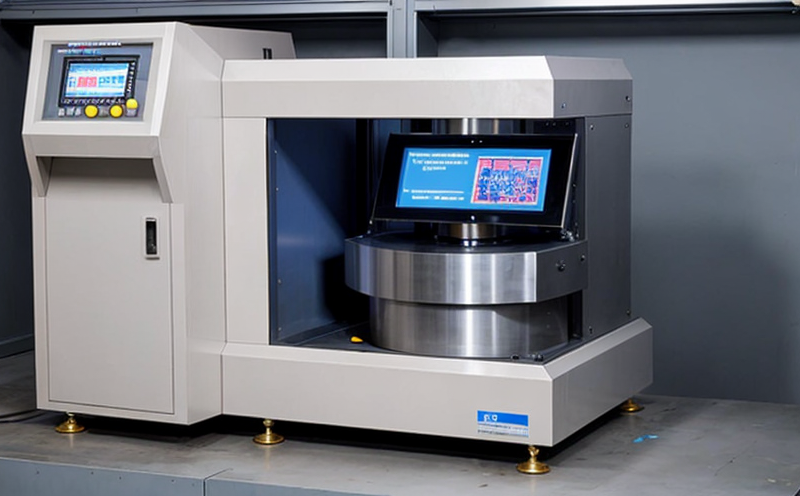ASTM E2919 X-ray CT Dimensional Accuracy Testing
The ASTM E2919 standard provides a robust framework for evaluating the dimensional accuracy of parts manufactured through Additive Manufacturing (AM) and 3D printing processes using X-ray Computed Tomography (CT). This method is essential in ensuring that AM products meet critical design specifications, which is particularly important in sectors like aerospace, automotive, medical devices, and consumer electronics. ASTM E2919 leverages the non-destructive nature of X-ray CT to inspect complex geometries without compromising the integrity or functionality of the part.
The test methodology involves several key steps. Initially, a specimen undergoes rigorous pre-processing, which includes cleaning and surface preparation to minimize artifacts in the CT scans. The part is then scanned using an industrial-grade X-ray CT scanner capable of capturing detailed cross-sectional images at sub-millimeter resolutions. These images are subsequently reconstructed into three-dimensional models that allow for precise measurement.
The primary output of ASTM E2919 testing is a comprehensive report detailing the deviations between the as-built part and the nominal design. This includes both positive (over-sizing) and negative (under-sizing) tolerances, which can impact performance and safety in critical applications. The standard also specifies acceptance criteria based on specified tolerances defined by the designer or regulatory body.
One of the significant advantages of this testing method is its ability to detect subtle discrepancies that might not be visible with other inspection techniques. This capability enhances quality assurance processes, ensuring that only parts within acceptable dimensional limits are released for further processing or use. Additionally, ASTM E2919 supports continuous improvement in AM process controls by identifying areas where adjustments can lead to higher precision.
The application of ASTM E2919 extends beyond just compliance; it plays a crucial role in advancing the capabilities of additive manufacturing technologies. By providing accurate and reliable dimensional data, this standard facilitates innovation within industries reliant on precise components. It also supports regulatory requirements that mandate adherence to strict tolerances for safety-critical parts.
Moreover, ASTM E2919 enables better decision-making during product development cycles by allowing early detection of potential issues. This proactive approach reduces costly rework and improves overall efficiency in manufacturing operations. For instance, aerospace manufacturers can leverage these insights to enhance the reliability of structural components while medical device companies ensure biocompatible implants fit securely and functionally within the human body.
In summary, ASTM E2919 X-ray CT dimensional accuracy testing is a vital tool for ensuring high-quality additive manufacturing outputs across various industries. Its precise evaluation methods contribute significantly to meeting stringent design specifications, enhancing product safety and performance, and fostering technological advancements in AM technologies.
Why It Matters
The precision demanded by modern engineering applications necessitates accurate dimensional measurements of parts produced via additive manufacturing (AM). ASTM E2919 provides a standardized approach to achieving this level of accuracy through X-ray CT scanning, which captures detailed internal and external features of the part. This ensures that manufacturers can consistently produce components meeting exacting tolerances required by industry standards.
Accurate dimensional measurements are paramount in ensuring that parts fit together correctly across assemblies. In sectors like aerospace and automotive, where precision is critical for performance and safety, even small deviations from specified dimensions could lead to failures or malfunctions. By leveraging ASTM E2919 testing, companies can maintain strict quality control throughout their production processes.
The use of X-ray CT technology allows for non-destructive inspection of complex geometries that are common in AM parts. This capability ensures that critical features such as internal channels, grooves, and other intricate details are accurately measured without damaging the part itself. The resulting high-resolution images provide detailed insights into potential defects or variations from nominal designs.
Compliance with ASTM E2919 also helps businesses meet regulatory requirements imposed by governing bodies like the Federal Aviation Administration (FAA) for aerospace components or the Food and Drug Administration (FDA) for medical devices. These regulations mandate strict adherence to dimensional accuracy standards to ensure safety and effectiveness of products intended for public use.
Furthermore, adhering to ASTM E2919 testing protocols enhances reputation among customers and stakeholders by demonstrating commitment to excellence in manufacturing processes. This can lead to increased market share and long-term customer loyalty as companies establish themselves as leaders in delivering high-quality AM parts.
Benefits
- Precise measurement of complex geometries without damaging the part.
- Identification of internal defects or variations from nominal designs.
- Compliance with industry standards and regulations.
- Enhanced reputation among customers and stakeholders through demonstrated quality control practices.
- Faster development cycles by identifying potential issues early in the manufacturing process.
- Better decision-making during product design iterations based on accurate dimensional data.





